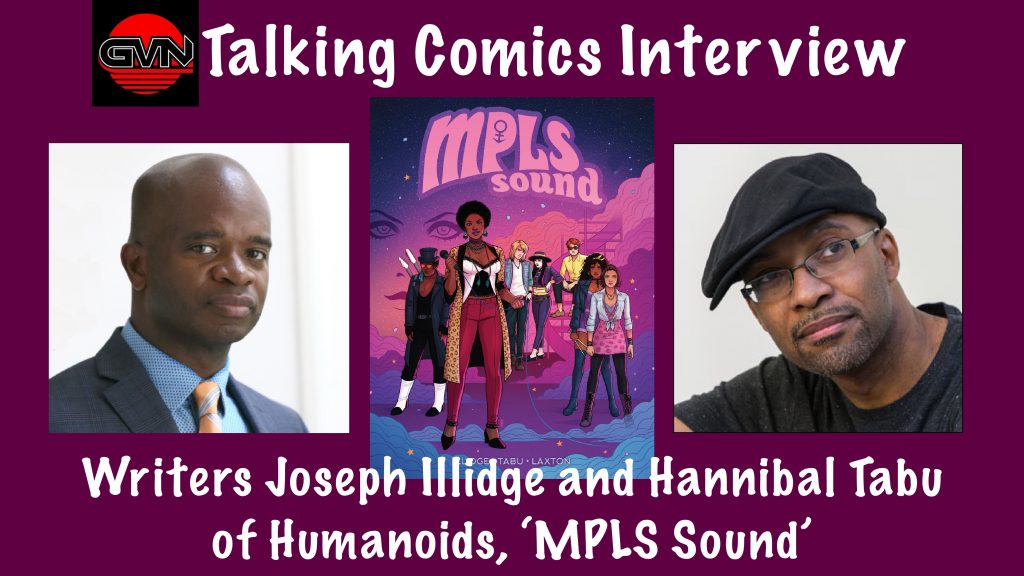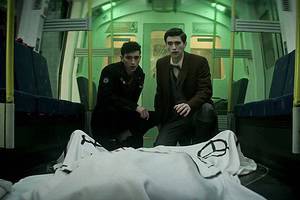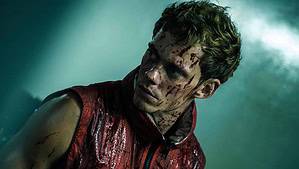Imagine living in Minneapolis in the early 80’s and getting to experience the burgeoning talent of Prince Rogers Nelson, the man soon to be known the world over as Prince. His sound, his music, his presence would explode on the scene and be the inspiration for many a young musician during that time. It was with that respect for the man and his willingness to share his vision to younger performers that laid the groundwork for Humanoids MPLS Sound. A great new graphic novel coming out this week that explores a young woman’s dream to follow in his considerably large footprints. But in her own direction. So let’s explore how it came about with the writers of the book, Joseph Illidge and Hannibal Tabu.
GVN: Thank you so much for your time guys and sharing a bit with us about this exciting new book.
HT: We’re happy to do this, thank you!
The Genesis of MPLS Sound
GVN: One of the great things about MPLS Sound is that it would be a great story, even if it didn’t involve the greatness that is Prince. How did you come up with the premise, and how much of the story did you have the basics of and which parts developed over time?
JI: The origin of MPLS Sound starts with the Senior Editor for Humanoids at the time, Fabrice Sapolsky. He’s a top-level expert on all things Prince, and he came up with the basic idea of the journey of a fictional band that encountered Prince before he founded The Revolution in 1983. Humanoids was committed to having Black writers on this story, which is admirable, and they came to Hannibal and myself to craft the story.
My experience galvanizing the core characters and historical groundwork laid by Hannibal allowed for a lot of freestyling with the narrative. The theme always remained present, and as characters entered the story, the ways in which they activated Theresa Booker, MPLS Sound’s lead, revealed themselves naturally.
HT: Everything started in the mind of Fabrice Sapolsky. Despite being from a whole other country, he has absorbed so much information about this era and its music. Making a book like this was his dream for years before he met any of us. What Fabrice lacked was the first hand experience. That Midwestern boredom that drove innovation, and the cold nights searching for excitement. I used many people that I already knew as templates, the editor from a magazine where I worked in the early 1990s, the tallest kid at my junior high, and so on. I laid real life personalities into this kind of situation and then Joe came in like the Wolf in Pulp Fiction to put it all together.

Introducing Theresa Booker
GVN: Your main character Theresa is a strong willed young woman who set a goal and refused to be deterred. Even by her father, who having worked in the music industry, knew it would be a struggle. Did you have a certain person in mind as you developed her and where did the name of Starchild come from?
JI: Theresa was an amalgam of numerous people in my life. My mother is the most determined Black woman I’ve ever met. Prince Rogers Nelson, himself, has a strong presence in the atmosphere of the story, so there’s some of him in Theresa. I’ve been operating as a maverick of sorts within the comic book industry for decades. So I have a bit of understanding of being part of a marginalized community within a business of artistic commerce. That informed Theresa and her fight, as well.

The Name is StarChild
When I was brought on to MPLS Sound, the name “Starchild” was already in place. it’s the perfect name and it informed Theresa’s character for me. She is a stellar human being, no matter how many people may try to block her light from reaching us.
HT: Theresa Booker, as noted, is based on a woman I worked with at Image Magazine in the 1990s. Both visually and in terms of the ambition there. The graphic novel adds musical talent (the Theresa I knew was an editor). But in many ways, it’s the young woman shyly surprised when people spoke to her at the magazine’s launch party. That Theresa’s talent was writing and editing, but the basic themes apply. In that they were coming out of the funk-heavy 1970s, there’s one line from a Parliament song that always stuck with me: “Stay tuned for Starchild.” I figured, living in the era, Theresa would take that as an invitation.

Artist Meredith Laxton
GVN : You chose talented artist Meredith Laxton to bring your words to visual life. How did you choose Meredith and what about her work surprised you as your book progressed?
JI: I didn’t choose Meredith, but fate certainly did, because the best and truly evocative aspect of this story is her art, her storytelling. What surprised me about her work was not how good it was, but how perfectly she captured a core electric feeling of those times in Minneapolis. The final long scene in the story always warms and breaks my heart at the same time, because Meredith’s art portrays the shift in perspective so well. One that a lot of readers will connect with.
Missing a Soundtrack
GVN: [On a side note, as I read through the book, I found myself many times wishing there was a soundtrack.] Just snippets of StarChild so you could hear the obvious passionate music Theresa and the band was laying down. Was there any thought to something like that? Perhaps as an extra addition fans might obtain?
HT: I stopped just shy of writing actual music. I noodled some lyrics, but I don’t know where they are.
JI: I had fantasies from time to time of writing lyrics for two songs in the story, but listen, I’m not as good a songwriter as Theresa Booker and certainly not Prince. Never set yourself up to fail on purpose.
Lessons for Fans
GVN: Well I can respect that. I know I certainly wouldn’t have dared take on that challenge. So for fans of Prince, what would you hope they could take from this story? What might they learn that they might not been aware of?
HT: I have been a fan of Prince since the early 1980s and didn’t know some of this stuff. Like the fact that Alexander O’Neal spent years referring to himself in the third person, years before we got used to it with The Rock. That’s one of my favorite things I learned about his very hilarious character. They might also have a clearer sense of the colorism that Prince proliferated, which is not great but happened.
JI: If Prince’s fans see that MPLS Sound is a tribute to Prince’s indelible impact on Minneapolis and the lives of its people, as well as being a melodic story full of his mystique, that’s the best I could hope for.
Upcoming Projects
GVN: Thank you so much for giving us some time. Do you have anything new coming up you want to or CAN share with our readers you would like them to know about?
HT: This week, my twelve issue run on Time Corps from Wunderman Comics hits the 1/3 mark. It is a cross-temporal science fiction adventure that I had so much fun writing. Later this year, another Wunderman Comics release will be a supernatural western three issue mini series called War Medicine. I just got pencils back from Roy Allan Martinez for the first issue. Finally, this November, Second Sight Publishing will bring Project Wildfire to comic book stores everywhere, so I’m very hyped about that.
JI: I can’t give any specifics right now, but it would be fair to say MPLS Sound won’t be my last historical music graphic novel.
Thanks so much for your time. Humanoids MPLS Sound drops this week where great graphic novels are sold. And be sure to check out our interview with MPLS Sound Artist Meredith Laxton, here on Geek Vibes Nation.

Senior Writer at GeekVibesNation – I am a 50 something child of the 70’s who admits to being a Star Trek/Star Wars/Comic Book junkie who once dove head first over a cliff (Ok, it was a small hill) to try to rescue his Fantastic Four comic from a watery grave. I am married to a lovely woman who is as crazy as I am and the proud parent of a 18 year old boy with autism. My wife and son are my real heroes.







